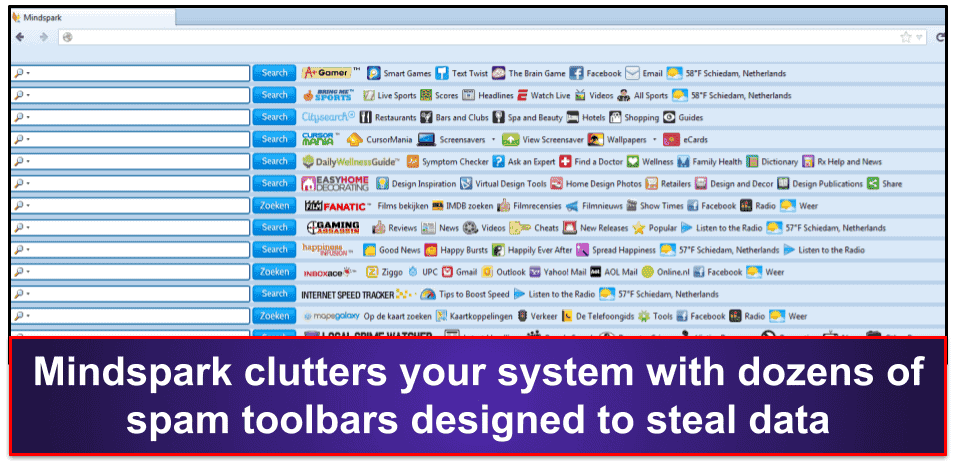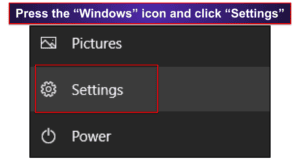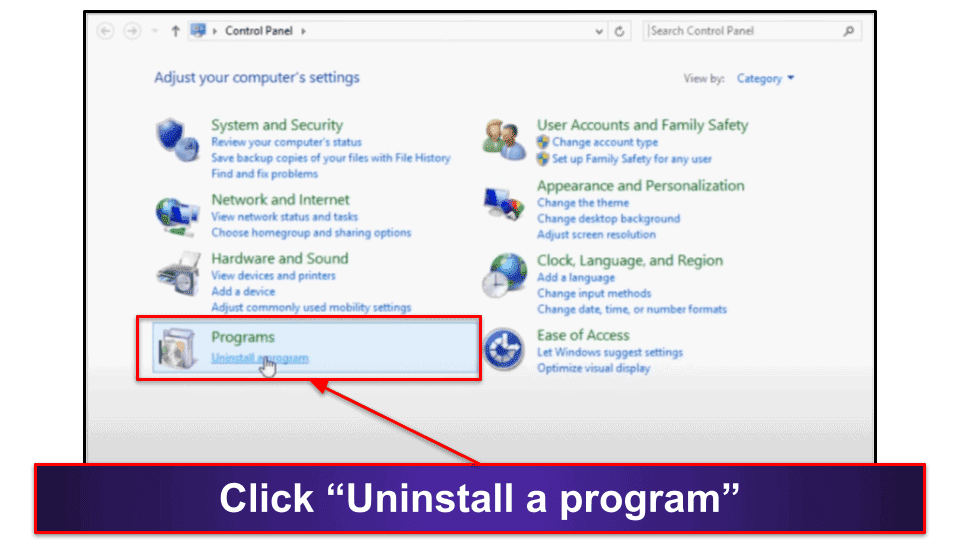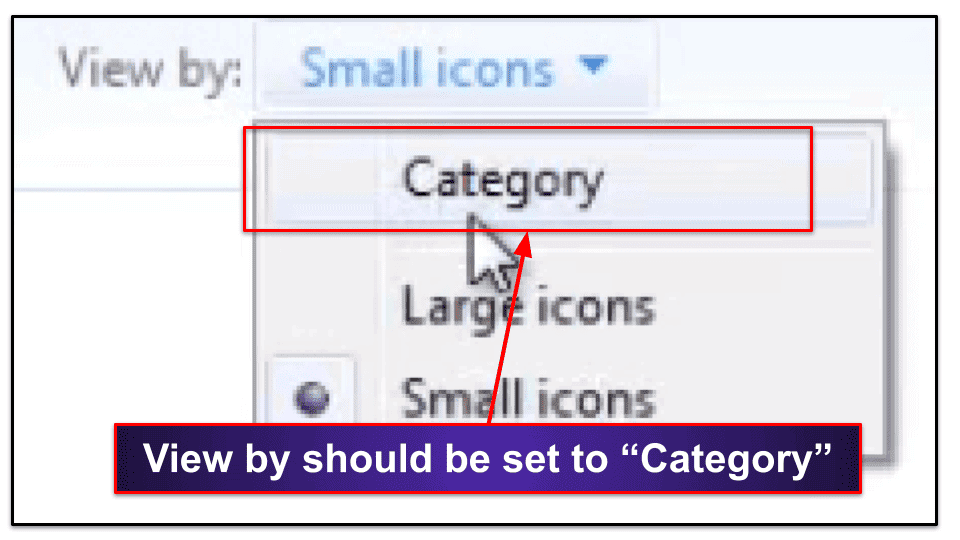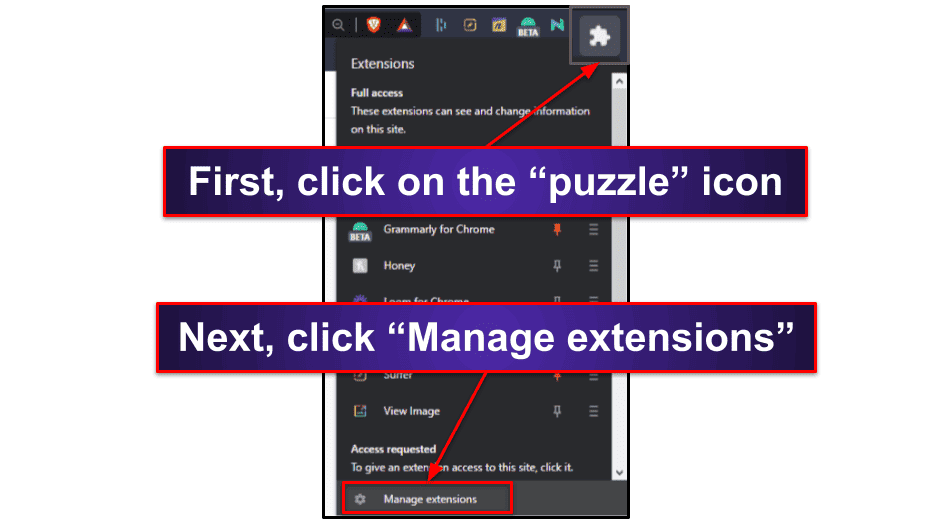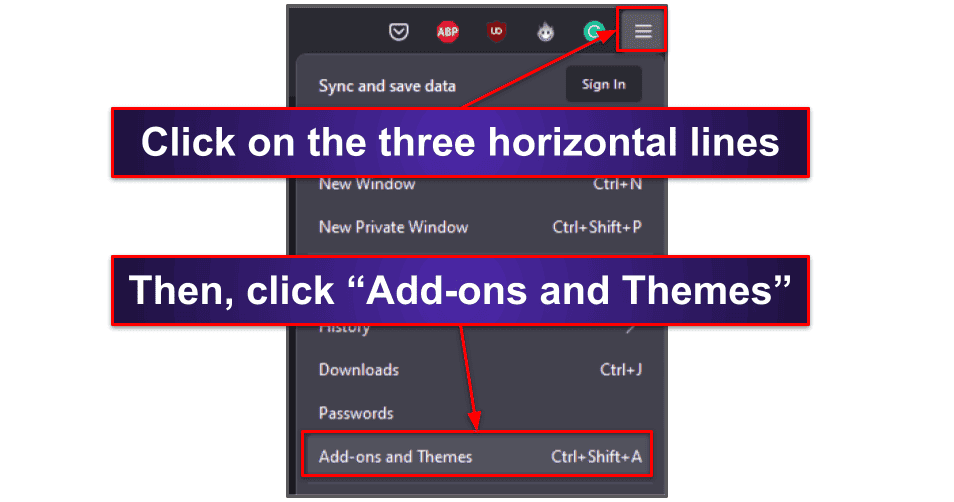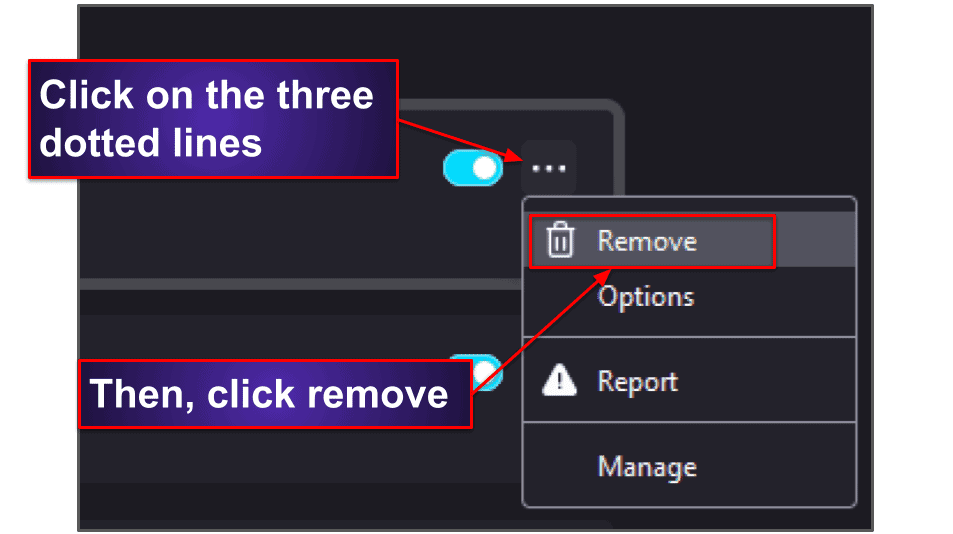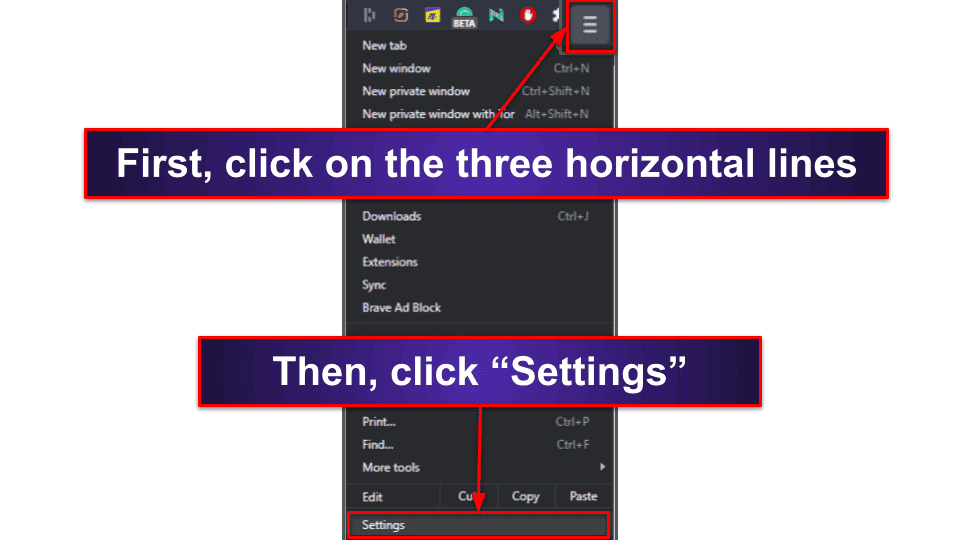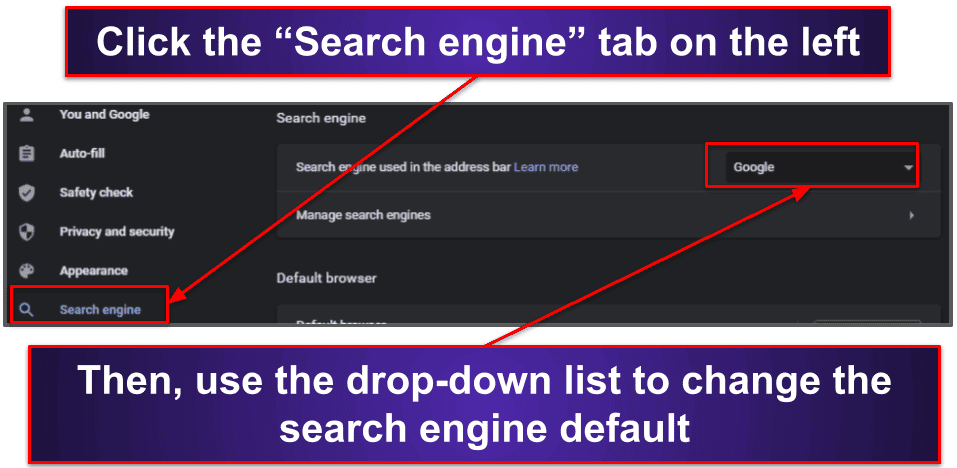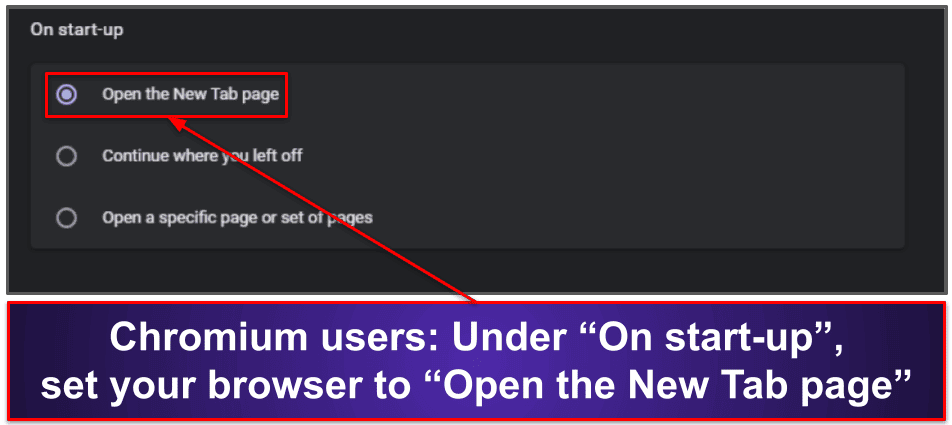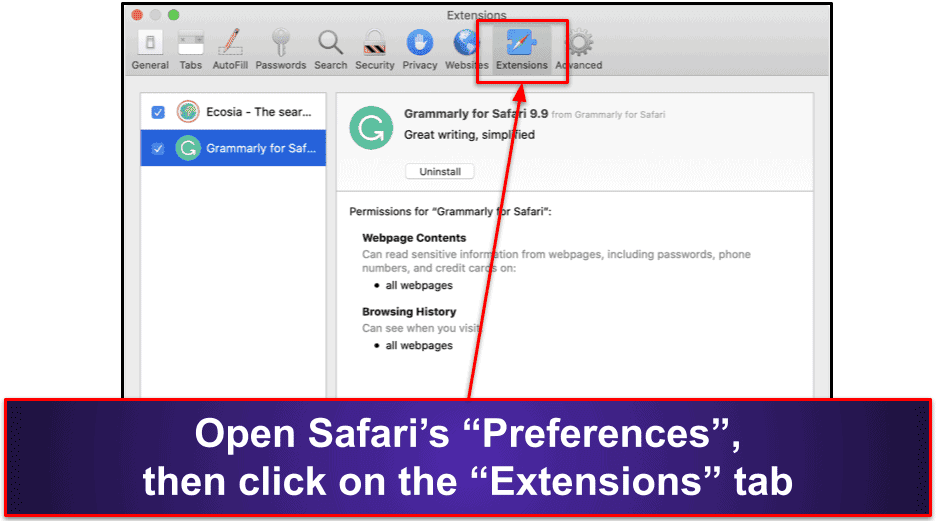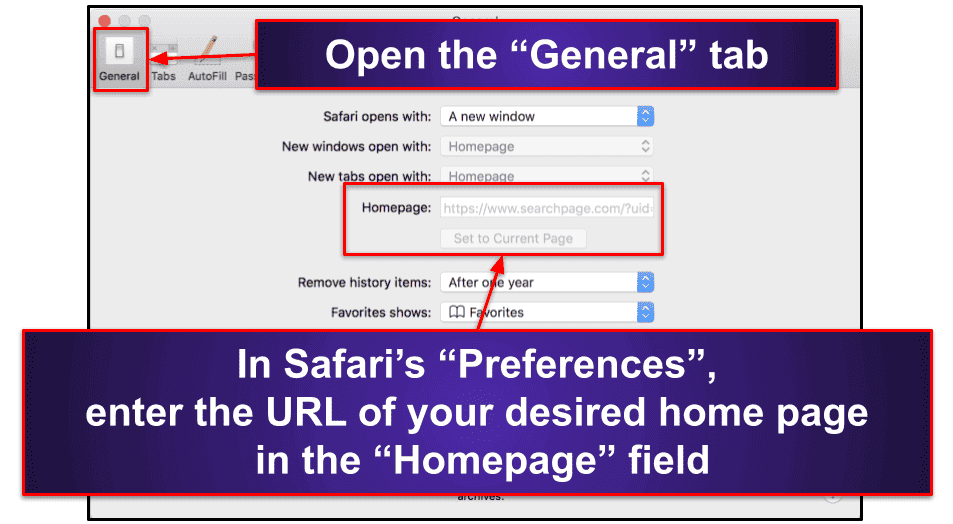
Sam Boyd
Updated on: December 28, 2023
Short on time? Here’s how to remove Mindspark Toolbar:
1. Uninstall Mindspark Toolbar — If you aren’t sure how to uninstall programs on your system, check out my step-by-step guides for uninstalling programs on Windows 7, 8, and 10, as well as on macOS computers. Once you’ve uninstalled the toolbar, navigate into your default web browser’s extension/plug-in settings and remove any Mindspark extensions you’ve accidentally installed. Finally, restore your homepage and search engine to your default settings in your web browser’s settings menu.
2. Run a Full Scan of your Device — Use a quality antivirus such as Norton to scan your device and detect any malware or Potentially Unwanted Programs (PUPs).
3. Remove the Malware and PUPs — Once the scan is done, you can allow the antivirus to safely remove the infected files it found.
4. Avoid Further Infections — Keep yourself safe going forward by choosing a reliable internet security suite. I really like Norton, which has flawless malware detection rates, real-time protection, and lots of other useful features like a password manager, a VPN, and parental controls. It comes with a 60-day money-back guarantee, so you can try it risk-free.
Mindspark toolbar is a potentially unwanted program (PUP), browser hijacker, and adware that can collect your personal data, inject your web searches with artificial results, and redirect you to unsafe sites. Mindspark toolbar can also change your web browser’s search engine to “Ask” and show a lot of annoying ads and banners while you’re surfing the web.
If you have Mindspark toolbar on your device, it was probably bundled with pirated software or media you installed (you can also get PUPs like Mindspark toolbar with free software or by accidentally downloading it from a suspicious website). Honestly, you should avoid downloading free or pirated content from untrustworthy sites — but if you’re torrenting or pirating, you absolutely need to use a good antivirus and virtual private network (VPN). If you’ve installed a version of Mindspark toolbar by mistake, then there’s a good chance that you have more malware on your computer.
Luckily, removing Mindspark toolbar and other malware is easy if you follow the right steps. Depending on your operating system, you can uninstall Mindspark toolbar manually by going into your Windows 10 “Settings” menu, via the control panel in Windows 7 and 8, or by using “Finder” on Mac. However, you also need to remove any associated extensions from your web browser and reset your search bar and homepages to their default settings.
Once you’ve done this, you should download and install a comprehensive antivirus scanner to scan your device for malware and protect your computer from future PUPs and malware.
60-Days Risk-Free — Try Norton Now
Preliminary Step: Uninstall Mindspark Toolbar
Uninstalling Mindspark toolbar varies depending on your operating system. Click on the operating system you have to jump to the appropriate step:
Windows 10
To remove Mindspark toolbar on Windows 10, you have to access the “Programs and Features” menu. To do this, first click on the “Windows” icon on your computer’s toolbar. Then click on the small gear icon on the left side.
In the window that appears, click “Apps”. This will bring up a list of all the installed apps on your PC. Scroll down the list until you see “Mindspark toolbar”, click on it, and then click “Uninstall”. The process should only take a few minutes. The Mindspark toolbar will be removed when it’s done, but you need to check your web browser for accidentally installed extensions. This process differs between Chromium-based browsers and Firefox. If you’re a Chromium user, click here. For Firefox users, click here.
Windows 8
To remove Mindspark toolbar on Windows 8, you have to access the “Programs and Features” menu in the Control Panel. To do this, from your desktop, press the start key on your keyboard to bring up Windows 8’s “Live Tile” view and immediately type “Control Panel” into your keyboard. An icon for the Control Panel should appear on the right side of your screen. Click on it, and then, in the window that appears, click “Uninstall a Program”.
Note: If you can’t see “Uninstall a Program,” make sure the “View by” option in the top right of the window is set to “Category”.
Clicking “Uninstall a Program” will bring up a list of all the installed apps on your PC. Scroll down the list until you see “Mindspark toolbar”, click on it, and then click “Uninstall”. The process should only take a few minutes. The Mindspark toolbar will be removed when it’s done, but you need to check your web browser for accidentally installed extensions. This process differs between Chromium-based browsers and Firefox. If you’re a Chromium user, click here. For Firefox users, click here.
Windows 7
On Windows 7, you have to access the “Programs and Features” menu in your Control Panel. To do this, click on your start menu and click on “Control Panel”. In the window that appears, click “Uninstall a Program”.
Note: If you can’t see “Uninstall a Program,” make sure the “View by” option in the top right of the window is set to “Category”.
This will bring up a list of all the installed apps on your PC. Scroll down the list until you see “Mindspark toolbar”, click on it, and then click “Uninstall”. The process should only take a few minutes. The Mindspark toolbar will be removed when it’s done, but you need to check your web browser for accidentally installed extensions. This process differs between Chromium-based browsers and Firefox. If you’re a Chromium user, click here. For Firefox users, click here.
Mac
To remove Mindspark toolbar on a Mac, you have to access “Finder”. To do this, from your desktop, click on the “Finder” icon on the Dock. In the window that appears, select “Applications”.
Note: By default, “Applications” will be under your “Favorites” menu.
This will bring up a list of all the installed apps on your Mac. Scroll down the list until you see “Mindspark toolbar”. Once you see Mindspark toolbar, drag it over the trash icon in the Dock, then drop it. Next, click and hold the trash icon until “Empty Trash” appears. Then, click “Empty Trash”.
Note: You can also open the Trash folder, click “File,” then “Empty Trash”.
The Mindspark toolbar will be removed when this is done, but you need to check your web browser for accidentally installed extensions. This process differs between Chromium-based browsers, Firefox, and Safari. If you’re a Chromium user, click here. Firefox users, click here. Safari users, click here.
Uninstalling Web Extensions in Chromium-Based Browsers
To check for and remove extensions from Chromium-based browsers (such as Chrome, Brave, and Edge), first click on the puzzle piece icon on your web browser’s toolbar. In the drop-down list that appears, click “Manage extensions”.
This will bring up a list of all extensions installed on your computer. Simply scroll through the list until you find any extension associated with Mindspark toolbar, and click “Remove”.
You may be asked to confirm your selection. If so, allow the extension permission to uninstall. You’re now ready to reset your web browser’s default settings.
Uninstalling Web Extensions in Firefox
The process for uninstalling web extensions in Firefox differs slightly from Chromium-based browsers. First, click on the three horizontal lines in the top corner of the web browser’s toolbar. Then, in the drop-down list, click “Add-ons and Themes” (for a keyboard shortcut, hit CTRL+Shift+A)
Find any extensions associated with Mindspark in the list that appears, click the ellipses next to it, and then click “Remove”. You may be asked to confirm this selection. If so, be sure to give permission to remove the web extension.
Important Note: Don’t simply flick the switch next to the extension. This turns the extension off, but it doesn’t remove it. Make sure to click “Remove”. If done correctly, the extension should disappear from the list of enabled extensions. You’re now ready to reset your web browser’s default settings.
Resetting your Web Browser’s Default Search Engine and Homepage in Chromium and Firefox
The process for resetting your web browser’s default search engine and homepage is the same for both Firefox and Chromium-based browsers.
First, click on the three horizontal lines on your toolbar, and click “Settings”.
Then, click on “Search engine” (listed as just “Search” in Firefox). Here, you’ll find a drop-down list where you can change the search engine to whatever you want, but I recommend sticking with Google.
This is where steps differ slightly for Chrome and Firefox users. On the same tab, Chrome users can scroll down and set the “On start-up” option to “Open the New Tab Page”.
Firefox users have to first click “Home,” where you can access the same start-up options. Make sure they’re both set to “Firefox Home” (if you just want the default settings).
Now that you’ve completed these steps, all instances of Mindspark toolbar should be removed from your computer. However, since you’ve likely installed Mindspark accidentally, it’s difficult to know what else is on your computer. This is why you should next run a full system scan with an antivirus. Here’s how.
Uninstalling Web Extensions in Safari
To check for and remove extensions from Safari, first bring up the Safari drop-down menu in your web browser by clicking “Safari” (located at the top left of your screen). In the drop-down menu that appears, click “Preferences” and then click the “Extensions” tab.
Find any extensions associated with Mindspark in the list that appears, click on the extension, and click “Uninstall”.
You’ll be asked to confirm your selection. Click “Uninstall,” and Safari will remove the extension.
Important Note: Don’t simply uncheck the check box next to the extension. This turns the extension off, but it doesn’t remove it. Make sure to click “Uninstall” — if done correctly, the extension should disappear from the list of enabled extensions. You’re now ready to reset your web browser’s default settings.
Resetting your Web Browser’s Default Search Engine and Homepage in Safari
To reset your web browser’s default search engine and homepage in Safari, first bring up the Safari drop-down menu in your web browser by clicking “Safari” (located at the top left of your screen). In the drop-down menu that appears, click “Preferences”, click the “General” tab, and enter your desired homepage in the field to the right of “Homepage”.
Note: You can also click “Set to Current Page” to change the homepage to the webpage you’re currently on.
Now, click on the “Search” tab, and in the dropdown list next to “Search,” choose your default search engine.
Now that you’ve completed these steps, all instances of Mindspark toolbar should be removed from your computer. However, since you’ve likely installed Mindspark accidentally, it’s difficult to know what else is on your computer. This is why you should next run a full system scan with an antivirus. Here’s how.
Step 1. Run a Full System Scan With Your Antivirus
Firstly, you should make sure there are no USB storage devices attached to your computer. If you’ve accidentally installed malware on your system, it has likely replicated onto these devices. If you’ve had USB storage devices plugged in for a while, you can initiate your antivirus to scan them — but for now, it’s a good option just to keep them unplugged.
Open your antivirus (if you don’t have one, I recommend installing Norton), and click on the option to run a full system scan, which conducts a comprehensive scan of all of the files and processes on your computer. However, a full system scan takes up to 4 hours and may slow down your computer. So, try to schedule a scan at a time when you don’t need to use your computer.
The full system scan will check your entire computer for all instances of malware, including viruses, cryptojackers, rootkits, and more. Once it’s done, your antivirus scanner will place all the malware that it found in quarantine. But never end a scan early (even if your infected file appears on the list) — viruses can replicate, and completing a scan early risks leaving your computer infected.
Once the virus scan has been completed, you’re ready to proceed with the next step.
Step 2. Delete Any Infected Files
All of the infected files your antivirus scanner detected will be placed in your quarantine vault. While the quarantine list stops the virus from running, it’s still on your computer. You need to go through the quarantine list and remove every infection. Sometimes, you may find false positives on the list — these are safe files your antivirus scanner has flagged due to sharing common traits with malicious files. Advanced users can whitelist these false positives, but if you’re not an advanced user, your best bet is to just remove everything on the list.
Once everything has been removed from the infected file list, you need to restart your computer to make sure there’s no more malware on your system. Once your computer has restarted, it’s crucial to run a second full disk scan. It’s entirely possible (and likely) that the malware infection you had on your computer replicated before you had the chance to remove it. Thankfully, the second scan won’t take as long as the first one. Antiviruses like Norton remember what files have just been scanned and simply look for recent changes or modified files during a second scan.
If the second scan finds a virus infection, it means malware on your computer is replicating. You need to repeat this process until the virus infection no longer appears on your list (resetting your computer every time).
When there are finally no more infections appearing on the infected file list, your computer is safe. You next need to keep your device safe from other unwanted programs and malware.
Step 3. Keep Your Device Protected From Other Unwanted Programs
You now understand how easy it is to get an infection (whether a virus or PUP) on your computer. You’ve safely removed the infection, but you must take some precautionary steps to prevent a future infection and protect your devices from unwanted programs.
Keep Your Software, OS, and Drivers Up-To-Date
The first step is to make sure everything on your computer is up to date with the latest security patches. A vulnerability attack (or exploit) can happen when running outdated software. Developers issue updates and security patches for software that has vulnerabilities.
Another way to keep your computer updated with the latest version of the software is to make sure to turn on the auto-update option. For example, on Windows 10, you can just type “Windows Update” into your taskbar, and you’ll be taken to a window where you can check for updates for your apps, operating system, and drivers.
It may be overwhelming to keep track of the status of all of your apps. Luckily, many antiviruses, like Avira, also come with a scanner that checks for outdated applications and drivers and updates them for you.
Don’t Download Suspicious Files
Downloading suspicious files from untrusted sources is one of the most common ways to get a virus infection or a PUP like Mindspark toolbar.
Always make sure you trust the sender of an email if they send an attachment or a link with their email. You can even ask the sender outside of email if they intentionally sent the attachment or link for extra security. If they didn’t, chances are their account has been compromised.
Another way to stay safe from virus infections is to install a comprehensive antivirus program with real-time protection in the background. Real-time protection scans every email you open and file you download and keeps your computer safe by intercepting malicious downloads and blocking dangerous sites.
Secure Your Wireless Network and IoT Devices
When you visit a restaurant or coffee shop, chances are you’ll connect to their unsecured public Wi-Fi network — but hackers target these unprotected networks and can gain access to your personal information (passwords, social security number, etc) and also infect your device with malware. If you have to connect to an unsecured wireless network, make sure to protect your data with a good, low-cost VPN, such as ExpressVPN.
Still, I recommend avoiding open networks, and they’re really easy to spot — just look for the text “Open” and a shield icon warning next to it.
Make sure your own network is secured by setting up a strong password. If you need to set a password, or improve an existing one, log into your router’s settings to update your password. You can either check the instruction manual that came with your router for exact instructions, or you can type the router’s brand and model number into your search engine.
All of your internet of things (IoT) devices need a good password to block hackers from accessing them, too. IoT devices are devices in your home that have remote functions you can access with your phone or computer, such as lights and CCTV. Without a secure password, cybercriminals can gain full control of these devices in your home. Like with your wireless network, set a secure password for your IoT devices by checking the model number online or in the device’s instruction manual.
The best way to set secure passwords is to purchase a password manager like Dashlane, which can generate strong passwords for you and store them in an unbreakable vault. When you need to log into an account, Dashlane can fill in your password automatically, meaning you never have to worry about forgetting your passwords.
Download a Secure Antivirus Program
Your final step to secure your computer is to download a robust and comprehensive antivirus program. However, some antivirus programs are better than others. To help you decide which one is the best for you, check out our selection of the best antiviruses of 2024.
Norton is my favorite, and it includes:
- Real-time threat protection. Actively scans and intercepts malicious file downloads.
- Firewall. Monitors network activity and prevents unauthorized access.
- Password manager. Generates and stores passwords so you never lose access to accounts.
- Secure VPN. Spoofs your location using a fake IP address.
- Parental controls. Lets you set up limits on what your children can see and do online and how much time they can spend on their computer.
Frequently Asked Questions
What is Mindspark toolbar?
Mindspark toolbar is an adware application and browser extension that changes your search results, alters your homepage and search engine, and steals your browsing data. Mindspark toolbar can also inject sponsored results into search engine results and show annoying advertisements while you browse the web.
If you’ve downloaded Mindspark toolbar by accident, chances are you have more malware infections on your computer that you must remove. First, you should uninstall the Mindspark toolbar. Then, run a full system scan using a comprehensive antivirus suite like Norton.
Is Mindspark toolbar a virus?
Mindspark toolbar isn’t a virus. However, it can be classified as both a potentially unwanted program (PUP) and adware. Mindspark toolbar won’t damage your computer, but it will steal your browsing data, change your search results, clutter your computer with pop-ups, and redirect you to unsafe websites.
If you’ve been infected with an adware file like Mindspark, chances are you have more PUPs and malware files on your system — like trojans, rootkits, or computer worms. So, you should follow our steps to secure your computer from future threats. The most important way to keep your browser and desktop free from malware infection is to download a high-quality antivirus program like Norton 360, which can detect and remove every type of malware in real-time with its advanced antivirus scanner.
How does Mindspark get installed?
PUPS such as Mindspark toolbar are often bundled alongside other freeware applications, pirated content, and malicious programs. Mindspark victims are usually tricked into installing the toolbar themselves when they think they’re getting cool free programs and pirated media. Fortunately, once you realize you’ve been compromised, it’s pretty easy to uninstall Mindspark.
To avoid installing adware like Mindspark toolbar and other malware in the future, never download any files or click on links from untrustworthy sites. To be honest, you should never download anything on your computer without having a trustworthy antivirus package (such as Norton). Norton’s real-time protection tool can intercept dangerous downloads containing PUPs such as Mindspark toolbar and stop you from installing them on your computer.




